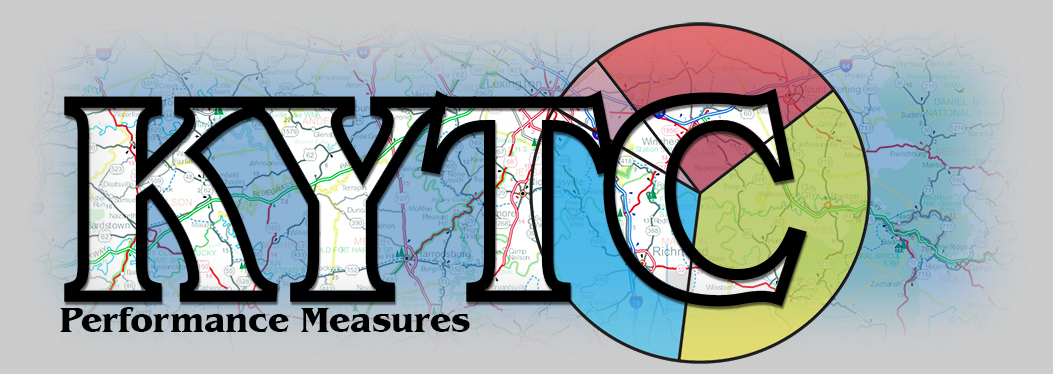- Overview
- Scorecard

In general, the Secretary of Transportation in Washington, D.C. , in consultation with FHWA, State Governments, Metropolitan Planning Organizations (MPOs), and other stakeholders, will establish performance measures for pavement conditions and performance for the Interstate and National Highway Systems (NHS), bridge conditions on the NHS, injuries and fatalities on all public roadways, traffic congestion and on-road mobile source emissions in areas with population over one million, and freight movement on the Interstate System. States (and MPOs, where applicable) will set performance targets in support of those measures, and State and Metropolitan plans will describe how program and project selection will help achieve the targets.
In Kentucky, we’re currently working to develop a limited number of performance measures to help meet new federal performance management requirements. Listed below are the goal areas that all states will be required to meet. These measures will support and enhance the Mission of the Kentucky Transportation Cabinet which is “To provide a safe, efficient, environmentally sound and fiscally responsible transportation system that delivers economic opportunity and enhances the quality of life in Kentucky.”
National Goal Areas for Performance Management:
1. Safety: To achieve reduction in fatalities and serious injuries on all public roads.
2. Infrastructure Condition: To maintain highway infrastructure assets in state of good repair.
3. Congestion Reduction: To achieve reduction in congestion on the National Highway System.
4. System Reliability: To improve the efficiency of the surface transportation system.
5. Freight Movement and Economic Vitality: To improve freight networks, strengthen the ability of rural communities to access national and international trade markets, and support regional economic development.
6. Environmental Sustainability: To enhance the performance of the transportation system while protecting and enhancing the environment.
7. Reduced Project Delivery Delays: To reduce project costs, promote jobs and the economy, and expedite the movement of people and goods by accelerating project completion through eliminating delays in the project development and delivery process, including reducing regulatory burdens and improving agencies’ work practices.

| Currently, you are viewing the preliminary findings generated by KYTC's "Performance Measures" task group. | ||||||||
Fatality Rate Serious Injuries Serious Injury Rate |
Bridges |
Pavement Smoothness Pavement Condition |
Roadway Feature Condition |
